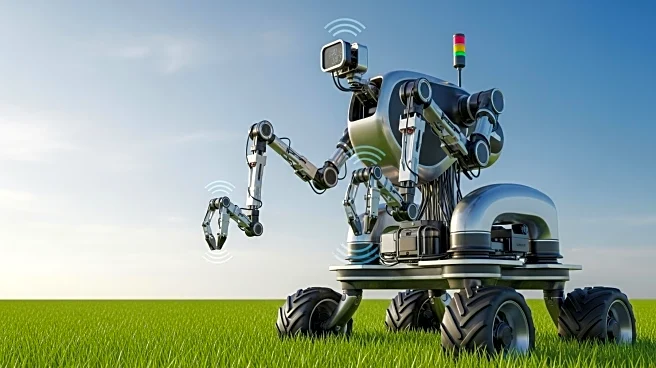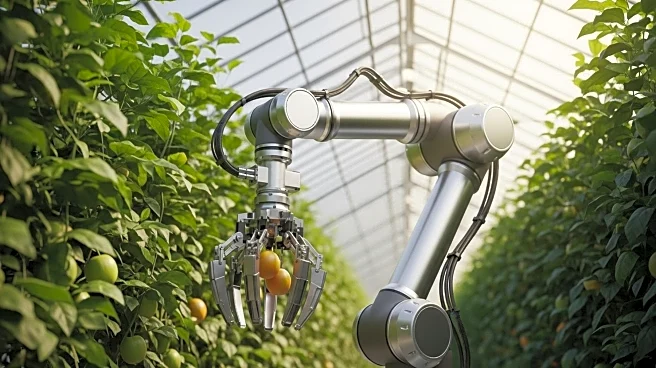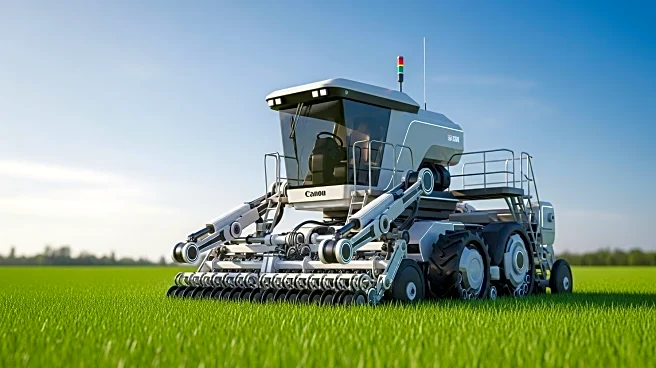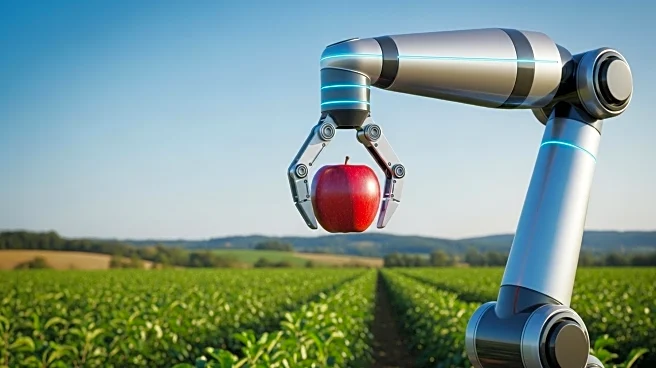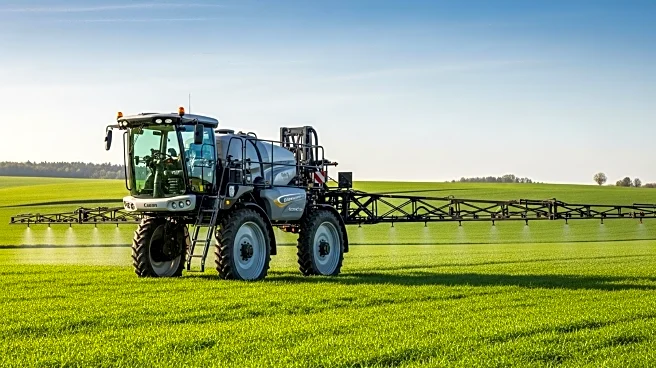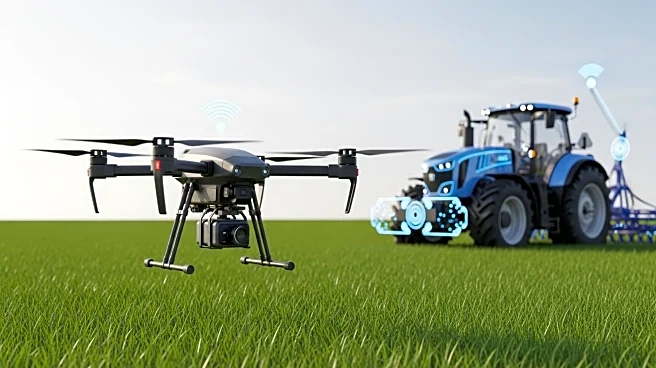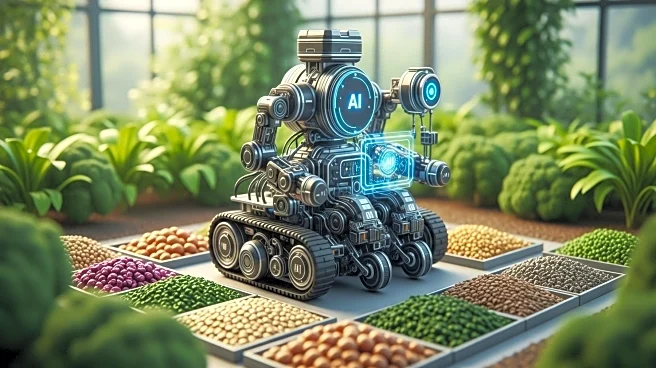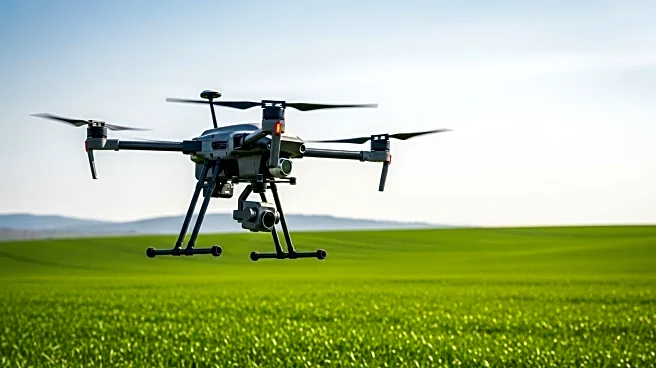What's Happening?
The agriculture robots market is experiencing significant growth, driven by the need to enhance productivity and address labor shortages in the farming industry. With a market value of USD 14.09 billion in 2023, it is projected to reach USD 76.46 billion by 2032, growing at a CAGR of 20.70%. Agricultural robots, or agribots, are increasingly being adopted to automate tasks such as planting, harvesting, and monitoring, utilizing technologies like AI, GPS, and machine learning. North America currently leads the market due to its advanced farming infrastructure and significant R&D investments, while the Asia-Pacific region is the fastest-growing market, fueled by rising food demand and government support.
Why It's Important?
The expansion of the agriculture robots market is crucial for addressing global food security challenges and sustainability goals. As the global population continues to rise, the demand for food increases, putting pressure on agricultural productivity. Robots offer precision farming benefits, such as reduced input waste and higher crop yields, which are essential for meeting these demands. Additionally, the adoption of agricultural robots can mitigate labor shortages and improve efficiency in farming operations, making them vital for the future of agriculture. Stakeholders, including governments and agri-businesses, stand to benefit from investing in this technology to ensure sustainable food production.
What's Next?
The agriculture robots market is expected to continue its growth trajectory, with further advancements in AI and machine learning enhancing the capabilities of these robots. Governments may increase subsidies and support for digital agriculture adoption, encouraging more farmers to integrate robotic solutions into their operations. As the market expands, companies may focus on developing affordable modular solutions tailored for small-scale farms, particularly in emerging economies. Collaboration with agri-tech startups and local governments could also drive innovation and adoption of region-specific solutions.
Beyond the Headlines
The rise of agricultural robots presents ethical and environmental considerations, such as the impact of automation on rural employment and soil health. While robots can reduce chemical usage and environmental impact, over-dependence on machinery may affect soil quality. Additionally, cybersecurity risks associated with AI-based systems pose challenges that need to be addressed to ensure data protection and system integrity. As the industry evolves, stakeholders must balance technological advancement with sustainable practices and ethical considerations.

